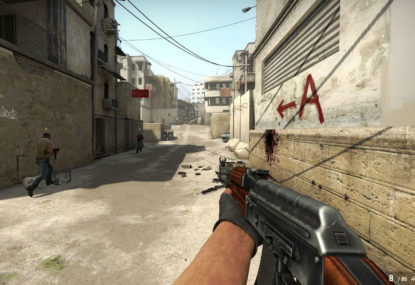JackJumpers' NBL title was special - but where does it sit among Tasmania’s top ten sporting moments?
It’s a pretty good time to be a Tasmanian sports fan right now. After years in the sporting wilderness with not much to celebrate,…

Prize pools play a huge part in creating and building up a fledgling eSports scene, like the one in the Oceanic region.
While we are considered a small region, we’ve created waves on the world stage, with Oceania being represented by various players in international tournaments.
LA Renegades, Legacy eSports, Team Immunity and the Chiefs eSports Club have competed in international CSGO tournaments, while The Chiefs have become a competitive force in the League of Legends Wildcard competitions.
Avant Garde have also represented the region in the Smite World Championships, while PiG from Exile 5 will compete at IEM Katowice in Starcraft II.
With our slow creep as world stage contenders, Hi-Rez have announced a $100,000 prize pool for the Oceanic Smite Pro League in 2016.
The prize pool will be distributed to teams during three splits throughout the year, in an attempt to keep the Oceanic Smite scene sustainable.
The new and increased prize pool follows the $65,000 prize pool given at the Smite Oceanic Regional Finals at PAX Australia, where team Avant Garde won $25,000 and were flown out to Atlanta, USA, to compete against the world’s best at the Smite World Championships.
Split One will see teams compete for a share of the $10,000 prize pool, with the best two duking it out at the Mwave CGPL Autumn 2016 LAN for the larger share of the prize pool.
The event, hosted by Mwave and CyberGamer at the Australian Technology Park, will host LAN finals for Rocket League, Call of Duty: Black Ops 3 and Counter-Strike: Global Offensive as well, with a total of $8000 between them.
Blizzard have also thrown money into the Australian and New Zealand competitive gaming scene with the regional Heroes of the Storm finals. Four teams will compete for their share USD$20,000 prize pool and a spot at the HotS Spring Championship in Korea, which boasts a massive USD$500,000 prize pool.
Starcraft II have also heavily revamped their prize system by having a number of small regional tournaments leading up to the World Championship Series Circuit. Oceania, along with North America, Europe, Latin America, China and Taiwan will each host their own events (WCS Regional Challenger), each with a prize pool of USD$10,000. The winners of each regional challenger event then go up against each other in WCS Circuit Events, each event having a USD$50,000 prize pool.
But it’s not all about throwing money into the scene and seeing what sticks. Much like Hi-Rez and Smite, Riot Oceania have looked for ways to funnel money into the professional League of Legends scene while ensuring organisations are able to continue operations.
Daniel Ringland, Riot Oceania’s eSports and competitive manager, said:
“Our philosophy is that it’s more important to support all teams, players and staff consistently so they can grow, rather than to focus on larger payments to a smaller number of teams. We believe it’s important for the long-term success of eSports to empower all teams to grow and evolve, in a sustainable fashion and we believe this strategy will achieve this.”
Aside from the $64,000 prize pool for the year ($32,000 per split) and the OCS’s (Oceanic Challenger Series) $32,000 prize pool ($16,000 per split), Riot have created a funding model in an attempt to keep our scene not just alive, but competitive.
Daniel revealed that Riot pays each player $300 per week for the 20 weeks in which they play, while registered managerial positions receive $100 per week.
In addition to that, each organisation receives a $5000 stipend per split to be used in whatever way the organisation sees fit in growing their team, business and brand.
If we look at a single organisation, including the stipend and player/manager payments, each team receives $44,000 in a year, without factoring in the end of split prize pools ($30,000 to five players, $4000 if the team has two people in managerial/coaching roles).
Sponsors also add to a team’s bottom line. Organisations are starting to attract non-electronic sponsors, which adds to the financial assistance of each team.
For example, Red Bull and Monster have sponsored different organisations around the world. Team SoloMid (North America) have had GEICO, an insurance company, sponsor them, while Cloud 9 have had the United States Air Force Reserve add some financial support to the organisation.